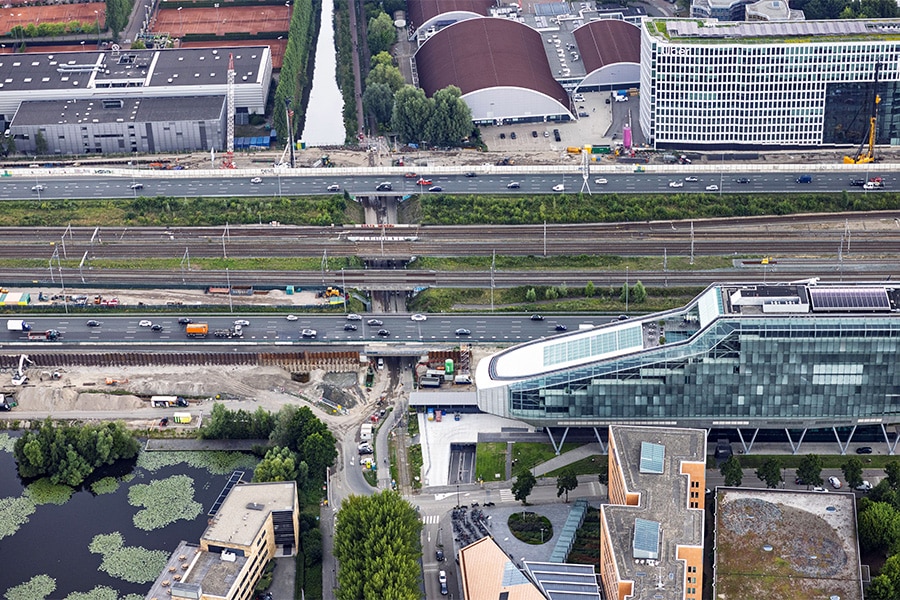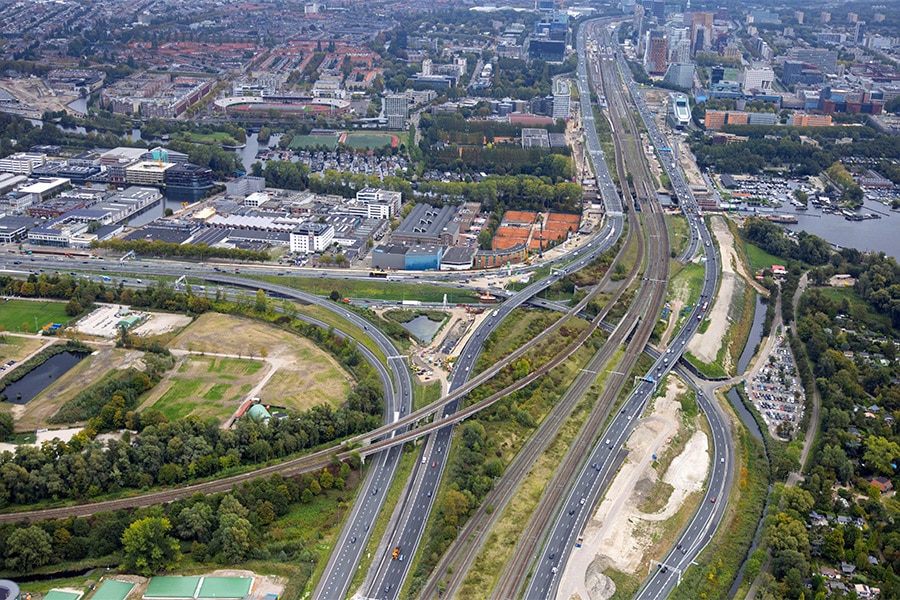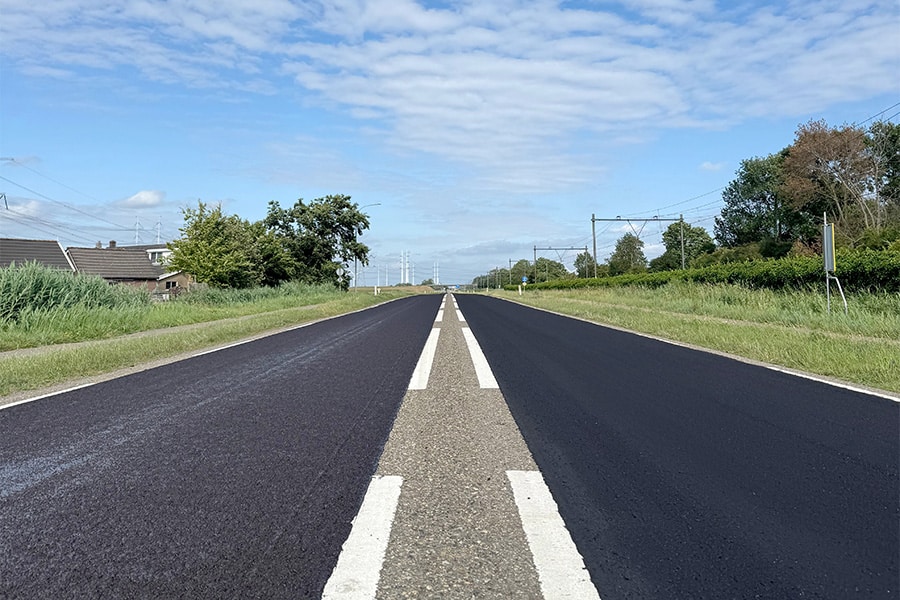
Towards a future-proof and sustainable railroad with circular superstructure renovation
Contributing to a sustainable society, among other things by enabling more people to choose the train. It is one of ProRail's ambitions. The number of train passengers is expected to grow significantly in the coming years. In order to meet this increased demand for rail capacity and guarantee future-proofing, the tracks will be thoroughly renovated at many locations in the coming years. Part of this is the necessary superstructure renovations (BBVs). A technical challenge in which there is also room for sustainability.
Classic BBV
BBVs involve the renewal of the entire superstructure at a site. The track superstructure comprises the rails, sleepers and ballast. The prevailing regulations (OVS00056-5.1 and 6.1) impose numerous requirements for the quality and type of rails, sleepers and ballast bed thicknesses. With a "standard" BBV, in accordance with these regulations, the designs and other necessary documents/plans required to actually perform the work are prepared. Depending on the project, Iv-Infra fulfills the role of execution supervisor to support ProRail and provide advice in assessing the documents, plans and designs prepared by the contractor. On the other hand, Iv-Infra as a recognized engineering firm can also provide support to the contractor in preparing the necessary documents, plans and designs.

Sustainable BBV Zeeland and West Brabant
ProRail has the ambition to work in an increasingly sustainable and circular way. To give substance to this ambition, the 'pioneer project' circular BBV West-Brabant and Zeeland has been started. Within this BBV, at four locations with industrial tracks that are used less frequently, the track will be 'renewed' with reused material. The goal is to bring in as little new material and parts as possible and instead cleverly reuse released material from other BBVs. In addition, the project should serve as an example for future BBVs.
This may sound simple, just replace used material and be done with it. But it is also important that the track remains safe, and the remaining life must be sufficient so that reuse is actually profitable. This led to a critical examination of the current regulations that apply to a BBV and whether it is possible to deviate from these regulations in a substantiated and responsible manner. After consultation with the specialists from ProRail, a series of measures were determined to meet the sustainable ambitions.
Some of the measures applied
Requirements for the reuse of superstructure material (BBM) are prescribed in ProRail's guideline RLN00412. The main problem with this guideline is that the conditions used are too strict for the industrial tracks covered by this BBM. Due to the much lower number of train movements and lower track section speeds, compared to the through tracks found on the main line, the wear rate of the ironwork (rails and switch parts) is much lower. In order to achieve an acceptable residual life, it is still possible to use rails and switch parts that have more wear than the RLN00412 allows. The margin for reuse is thus greater on these tracks. Some of the rails and switch parts released by a standard BBV will therefore be perfectly usable at locations with fewer train movements.
The same principle applies to released sleepers. If no defects are found, a sleeper can be reused just fine. Nor is it always necessary to use a heavy type of sleeper (such as the 14-0XX girders). Because of the lower number of train movements, in many cases it is possible to scale down to a lighter type of girders such as the NS90 or duo girders. In this way, the amount of new concrete inserted is lower, in part because the availability of used NS90 and duo blocks is greater.
Because of the small number of train movements on the industrial tracks in this pilot project, it is sufficient to construct a thinner ballast bed. In addition, the existing ballast can be sieved, and then only the small fraction (< 22 mm) can be disposed of. Here too, a wider margin for reuse has been taken compared to the current regulations. As a result, less new ballast needs to be supplied.
In order to apply recycled materials, they will have to be collected and, where necessary, refurbished. Currently, materials are collected from various BBVs around Zeeland and West Brabant and stored at a so-called "materials hub.
Finally, the use of other types of materials was considered. For example, olivine (a mineral containing CO2 absorb) instead of the usual porphyry. An alternative sulfur concrete sleeper, which has a lower environmental impact than cement concrete, is also being used on some tracks.

Role Iv-Infra
The BBV circular in Zeeland and West Brabant involves Iv-Infra as implementation supervisor. However, given the different nature of this BBV, the role of execution supervisor is also different. In addition to providing advice in assessing the documents drawn up by the contractor, much more constructive participation will be required in the interpretation of these plans. The result is a much more integrated team made up of the contractor, ProRail, implementation supervision and additional external advisors. Instead of merely testing plans, you will have to enter into a dialogue with the contractor and ProRail in order to arrive at an acceptable interpretation together, in which the sustainable ambitions are also achieved.
Now that all plans, designs and necessary documents (incorporating the sustainable measures) have been finalized, the circular BBV Zeeland and West Brabant will start implementation in 2022.




